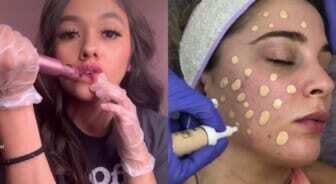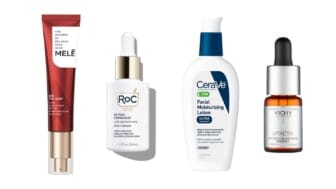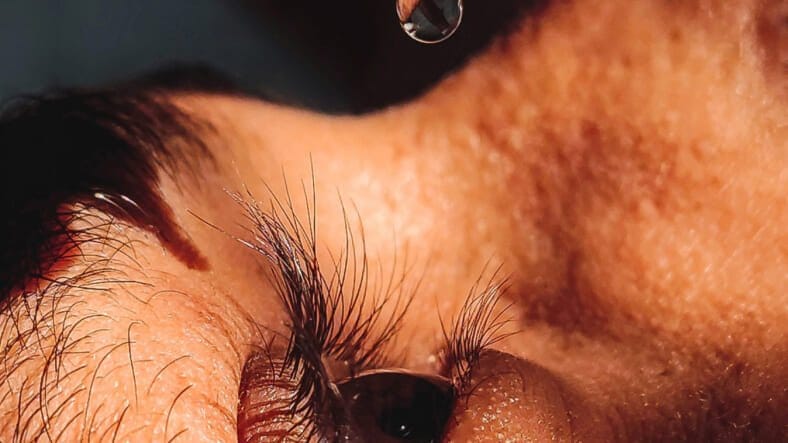
Medical technology is truly astounding, and to be honest, that might not be giving it the full credit it deserves. The industry has come a long way, even in the last several decades, and in some cases, these advancements have commingled with aesthetics, too.
For instance, Botox began as a treatment for an eye condition called ‘strabismus’ and now is used to smooth wrinkles, numerous plastic surgery techniques originated during the First World War as surgeons mended soldier’s wounded bodies, and even Latisse eyelash treatment was first intended to treat glaucoma. The latest advancement with a cool cosmetic effect: is Upneeq eye drops.
Upneeq is a medical treatment that’s got a lot of buzz, and it sounds so wild that you might not even think it’s real — but it is. So what is it? Simply put, Upneeq is a prescription eye drop that treats acquired ptosis, or blepharoptosis, a condition that causes mild to severe eyelid droop.
The result: a temporary eye-lift effect that gives the entire face a refreshed appearance. Seriously, it’s impressive! Here, we’re diving into all the details with Dr. Raymond Douglas, a board-certified oculoplastic surgeon in Hollywood, CA, who led the clinical trials on this latest innovation. Scroll on to learn more about Upneeq Eye Drops and to see some before and after photos.
How Do Upneeq Eye Drops Work?
First, it’s important to understand what acquired ptosis is and how it happens. Defined by the loss of strength and range in the eyelid muscles, the condition can occur for several reasons. “It’s called acquired ptosis because it’s a result of a trauma, such as wearing contacts or injury, or general wear and tear on muscle as we age,” says Dr. Douglas.
“The eyelid is made up of several layers, and there is a group of muscles that close the lid, called protractors, and two muscles that open the lids, called the levator and Muller’s muscles,” he explains. “When the Muller’s muscles are stretched, they can no longer open the eyelid fully.” This causes a drooping effect that may start as subtle but can eventually become more dramatic—not only aesthetically, but visually as well.”
Acquired ptosis can affect vision and create some discomfort while aesthetically speaking, it can cause someone to look tired or older than their years. That’s where Upneeq eye drops come in. These medical drops were developed to address mild to moderate cases, offering an alternative or intermediary option to traditional eyelid surgeries. Once Upneeq is dropped into the eye—a process that’s identical to administering regular eye drops—the solution works to temporarily tighten lax, delicate eyelid muscles.
The solution contains oxymetazoline, an alpha-adrenergic agonist that’s better known for treating nasal congestion and facial redness. When applied to the eyes, it targets a subset of adrenoreceptors in the Mueller’s muscle and elevates the eyelid. According to Dr. Douglas, oxymetazoline has been studied for decades, and Upneeq itself was studied for about four years before getting FDA-approval in July 2020, making it the first medical treatment for acquired ptosis.
What can you expect from Upneeq Eye Drops?
The drops start working immediately, though the best results are seen a couple of hours after application. “Our clinical trials shows that Upneeq lifts the upper eyelid in as little as two hours, but some patients achieved results in as fast as five minutes after the first dose,” says Dr. Douglas.
As for the faux eye-lift effect, well, we weren’t exaggerating. “The average lift is around 1 mm,” Dr. Douglas notes. “When you think about the space of the eye, the visual field is around 4 mm, so this is a significant lift!” The only caveat: Unlike an actual eye-lift, the results are temporary and start to wear off after eight hours.
Can You Use Upneeq Eye Drops for Purely Aesthetic Reasons?
While there are cases in which acquired ptosis causes discomfort or line-of-sight issues, many cases are very mild. To that end, it becomes more of an aesthetic issue for people versus a medical hindrance. “Many of my patients who use Upneeq, use it primarily for aesthetics. Many report that they look more awake and alert, and youthful looking after using Upneeq,” says Dr. Dougless. “Of course, they also appreciate the visual benefits of having their visual field increased.”
So, yes, if you are concerned with droopy lids, you may want to consider these eye drops. However, not everyone is a candidate for Upneeq, and you do need a consultation with an ophthalmologist or optometrist before getting a prescription. That said, knowing that it’s a viable option for approved candidates to treat eyelid droop is a huge leap. Surgery is no joke and having this alternative—especially for cases where someone isn’t a candidate for surgery just yet—is major.
Upneeq Eye Drops Before and After Photos:
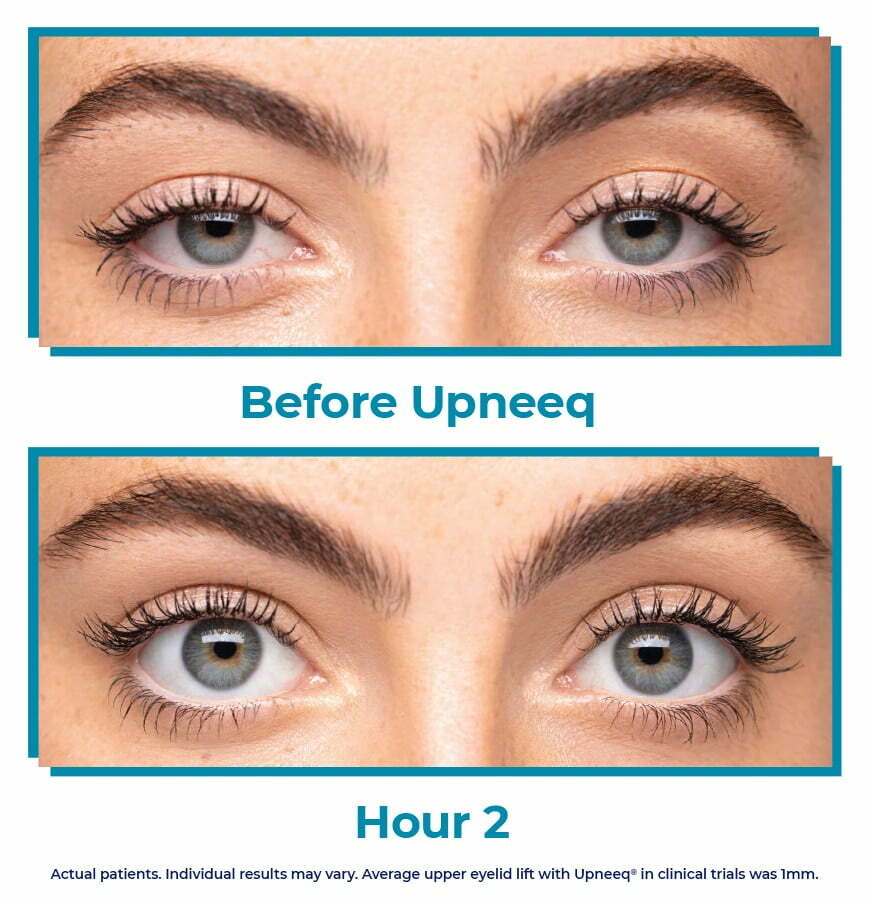
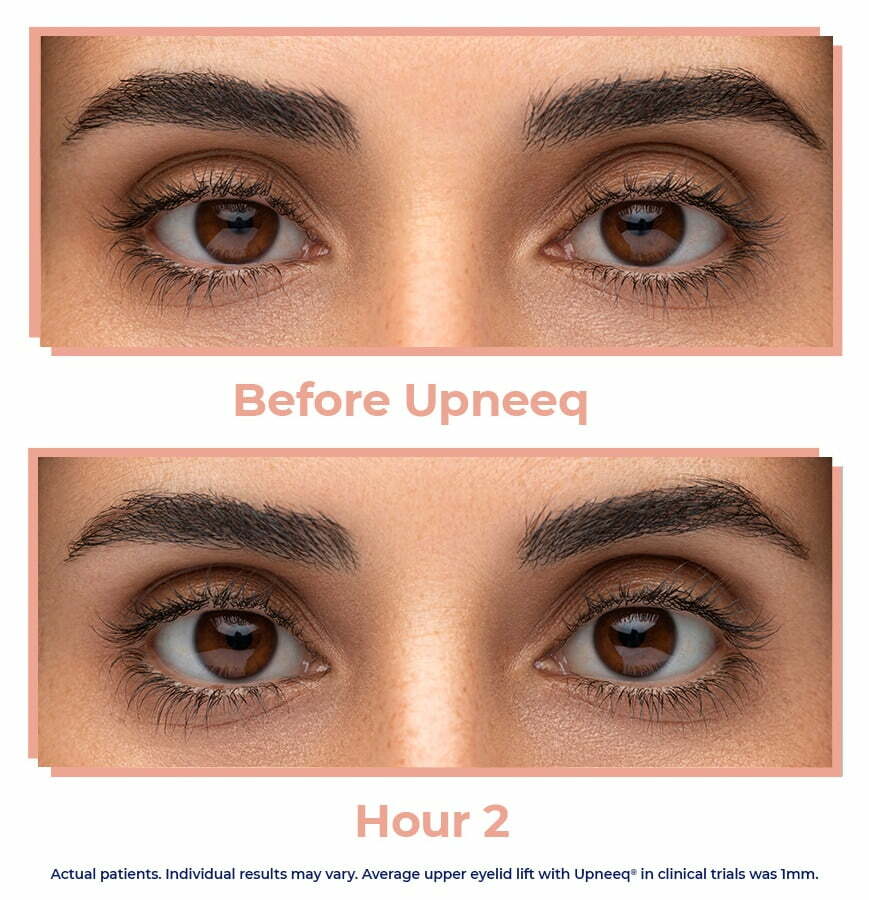
Some Considerations and Side Effects of Upneeq Eye Drops
Keep in mind this is a medical treatment that can only be obtained with a prescription from your doctor. The cost of Upneeq will vary depending on your pharmacy and location, but averages around $220 for a month’s supply. (If you are experiencing vision loss, it may be covered by your insurance, so check with your provider first. The eye drops come supplied in single-use containers individually packaged, with enough solution to treat both eyes once a day.
In the clinical trials for Upneeq eye drops, there were no observed negative long-term effects for patients using the product. However, Dr. Douglas says that somewhere between one and five percent of patients did see some mild side effects. “That included punctate keratitis, conjunctival hyperemia, dry eye, blurred vision, installation site pain, eye irritation, and headache,” he notes. “Of course, if you experience any side effects, you should stop using Upneeq and speak with your eye care provider.”
He adds that since Upneeq may impact blood pressure, and says he advises his patients with cardiovascular disease, orthostatic hypotension, and/or uncontrolled hypertension or hypotension to monitor their condition and seek medical care if it worsens. He also uses caution when prescribing to patients with cerebral or coronary insufficiency or Sjögren’s syndrome.
As with any prescription, it’s important to monitor yourself for any symptoms and relay them to your provider.


